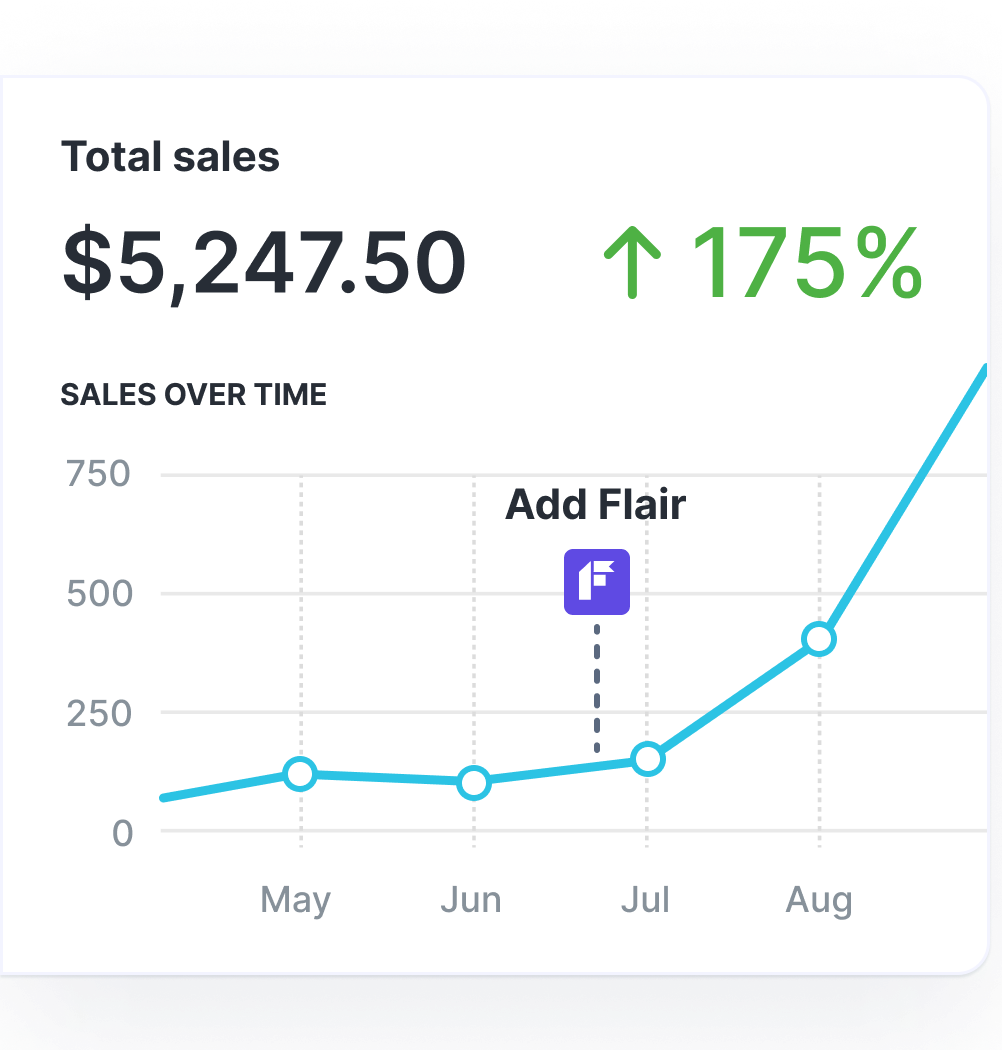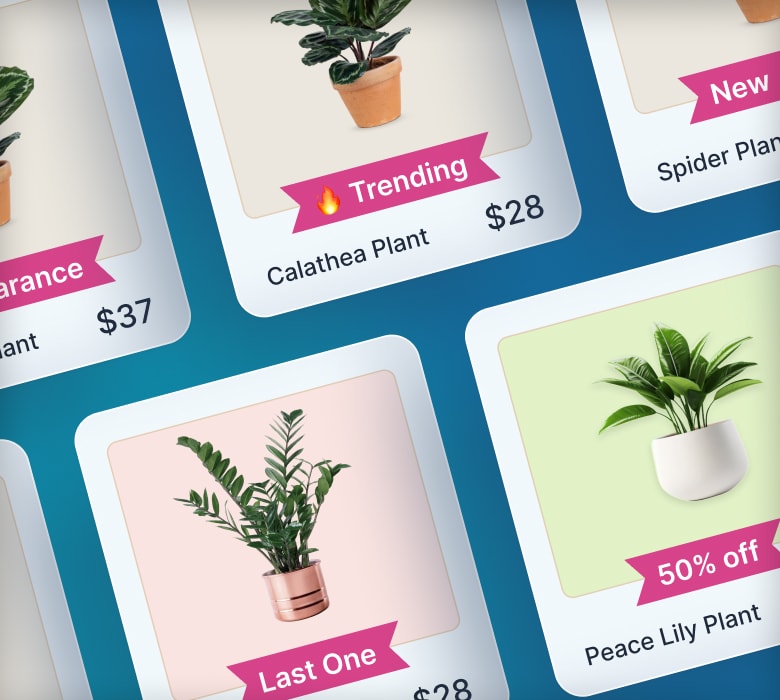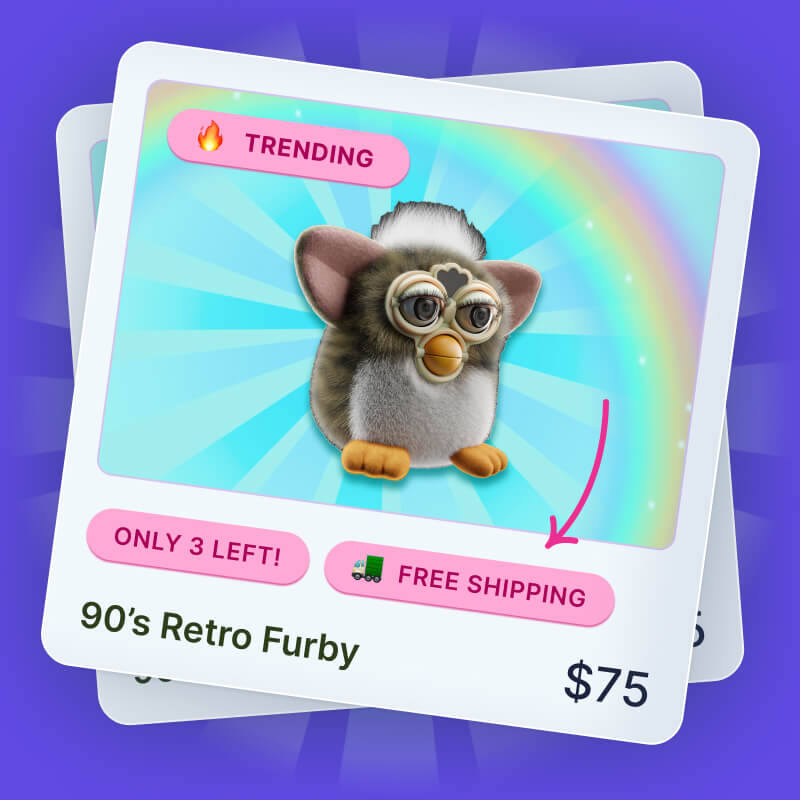Can You Sell Food on Shopify?

As consumers seek the convenience of at-home shopping and speedy delivery times, food e-commerce has rapidly grown into a multi-billion-dollar industry.
So you might be wondering: “Can you sell food on Shopify?”
The answer is a resounding “yes”. In this article, we’ll walk you through the steps for building and promoting your own Shopify food store.
Let’s get into it…
Why Sell Food on Shopify?
By 2029, global online food sales are expected to top $565 billion.

Just over half (53%) of American consumers bought food online between July 2023 and June 2024.
Let’s take a look at the most popular categories:
| Food category | Percentage of Americans who buy online |
| Snacks and candy | 24% |
| Fruit and vegetables | 23% |
| Frozen food | 22% |
| Rice and pasta | 22% |
| Breakfast cereal | 21% |
| Meat and sausages | 21% |
| Bread and bakery products | 21% |
| Dairy products | 20% |
As e-commerce continues to grow in popularity, it’s accounting for an ever-increasing share of food and beverage sales. In 2021, just under 12% of total US sales in the sector came through online channels, but this figure is expected to reach 21%+ by 2027.
All of which means there’s never been a better time to start selling food on Shopify…
How To Sell Food on Shopify: 5 Steps
Pro tip: Learn more Shopify selling tips and trick in our in-depth guide: How to Sell on Shopify - Probably The Most Useful Guide You'll Read
Understand the Legal Requirements
First, let’s make one thing clear:
Selling food online is more complex than selling candles, clothes, or colanders.
There are a bunch of rules and regulations that apply — and they vary by country and niche.
We can’t give you a comprehensive guide covering every region on the planet; for business and location-specific requirements, we recommend speaking to a lawyer or local government.
But we can discuss the types of regulations you’ll have to deal with. These include:
Permits and Licenses
Step #1 is to research the permits and licenses you’ll need to sell food online in your country, such as a:
- Food establishment permit
- General business license
- Health department permit
Naturally, these requirements will differ based on your location and business type. For example, if you’re not dealing with perishable goods, you may not need a permit from the health department.
Here are some useful links to country-specific information:
- US: How to Start a Food Business | FDA
- UK: Getting ready to start your food business | FSA
- Canada: Food business activities that require a licence under the Safe Food for Canadians Regulations | inspection.canada.ca
Food Safety and Labeling
Every food business needs to comply with food safety standards by getting serious about hygiene and ensuring products are handled and stored correctly.
On top of this, you need to label them accurately to make sure your customers know what they’re buying. This means your product labels should include information about:
- Ingredients
- Allergens
- Sell-by dates
- Nutrition
Get it wrong and you could be slapped with a fine, or even get your business shut down.
Regulations for Shipping Perishable Goods
If you’re selling food products, storing them correctly isn’t the only challenge — you also need to ensure they reach your customers in perfect condition.
This is especially true with perishable items like fruit, vegetables, and fresh baked goods.
You may need to invest in things like expedited shipping and refrigerated packaging to keep your orders safe as they travel from your warehouse to the customer’s home.
Choose Your Food Niche
Of course, there’s more to selling food on Shopify than nailing the legal side.
If you don’t choose an attractive niche with a large audience and low competition, you might as well not bother applying for all those permits and licenses.
Here are some top tips for identifying high-potential food niches:
Research Consumer Trends
Garum, a fermented fish sauce, was all the rage in ancient Rome. But you won’t find it on too many supermarket shelves today.
Why? Because our taste in food evolves over time. So if you’re going to launch a successful online food business, you need to understand what’s hot (and what’s not).
One way to do this is with a tool like Exploding Topics, which identifies rapidly growing trends before they take off.
Helpfully, it even has a food-specific category. At time of writing, it includes such culinary delights as:
- Tomato beef seasoning
- Psilocybin chocolate
- Bento cake

Scroll through the results, see what catches your eye, then do further research to see if it’s worth pursuing.
Study the Competition
We hate to break it to you, but you’re not the first person to start an online food store.
While that makes it harder to cut through, it also gives you the opportunity to learn from the competition.
One of our favorite competitor research techniques is to browse Flippa, a marketplace for buying and selling online businesses. In this case, we’re not using it to buy, but to search for examples of successful food niches from existing revenue-generating stores.
Simply search for a broad keyword like “food”, then add the following filters:
| Filter | Selection |
| Revenue-generating | Yes |
| Asset type | Websites and online businesses
Amazon stores |
| Website types | E-commerce
Dropship Inventory holding Shopify |
Then it’s just a case of scrolling the results and clicking on any that catch the eye.
For example, WorkPerks is a dropshipping store selling healthy snacks for offices and client meetings:

It’s making profits of $8,000+ per month, with a 56% profit margin.
As you can see from its monthly revenue report, WorkPerks sees consistent sales throughout the year, with the exception of a big spike in November:

Which could be a challenge or an opportunity, depending on how you look at it.
Check out as many listings as you like, make a note of the niches, then highlight those you want to explore further.
Read Industry Predictions
Full disclosure: at Burst, we know plenty about Shopify — but less about food.
Fortunately, there are plenty of legit experts out there who are more than happy to share their predictions about upcoming food and dining trends.
Just Google “food trends”, click the top half-dozen-or-so results, and start reading up on the next big things on the culinary scene.
What do you mean you’ve never heard the word “swicy” before?
Pick a Business Model
You’ve found a tasty niche and filled out all the necessary paperwork. Now it’s time to choose a business model.
Broadly speaking, you’ve got two options:
Producing Your Own Food Products
Fancy yourself as the next Martha Stewart or Gordon Ramsay? Turn your talents into revenue by producing and selling your own food products.
Alternatively, if you still want to offer something unique but don’t have the time or resources to do it all yourself, you can team up with a third-party manufacturer to produce and package your recipes for you.
Pro tip: In some regions, “cottage food laws” allow certain food products to be made in a domestic kitchen, with more lenient regulatory requirements than for a commercial kitchen.
Selling Food From Third-Party Suppliers
As you probably guessed, the alternative to selling your own food is to stock products made by third-party brands and suppliers — either by buying, storing, and shipping them yourself, or through dropshipping.
Naturally, this makes it a whole lot easier to start a food store (especially if you go the dropshipping route).
But it’s also much harder to develop a unique value proposition that gives shoppers a compelling reason to buy from you rather than a rival store.
(Remember, though, our previous research discovered that WorkPerks is making $8,000+ per month from food dropshipping, so it’s certainly not impossible.)
Pro tip: Learn more about dropshipping in Dropshipping: The Definitive Guide.
Figure Out Product Shipping
Surprise, surprise: shipping is more challenging with food products than in most other niches.
Here are a couple key considerations:
Shipping Fragile/Perishable Products
From fruit and veg to bottles of sauce and jars of jam, many food items are fragile. So you can’t just drop them in a plastic bag and add a shipping label.
Because orders need to be packed carefully and securely, consider setting higher shipping and handling fees to factor in the extra costs for time and materials.
You might also need to pay for refrigerated shipping, further increasing your expenses.
Alternatives To Product Shipping
Fact is, some food products just aren’t suitable for shipping by post. That elegant sugar tuile you crafted will snap like a dry twig the second you slip it into an envelope.
For that reason, you might have to consider alternatives to shipping, such as in-store pickup or local delivery.
Sure, it limits your potential customer base, but you can always expand to new locations down the line.
Set Up Your Shopify Store

Last but not least, it’s time to actually build your Shopify food store.
Shopify is a user-friendly platform — that’s why we love it. You can create a functional store in just a couple days by following these steps:
- Identify the products you want to sell
- Sign up for your Shopify FREE trial.
- Add your products to your store
- Customize your store with a Shopify theme
- Choose your shipping options
- Set up online payments
Easy, huh?
Pro tip: For a more detailed walk-through, check out How Does Shopify Work & What Is It? Get Started Guide.
6 Strategies To Promote Your Shopify Food Store
Once your store is live and ready to start generating revenue, it’s time for some serious promotion. Your goal here is to reach your target audience, showcase your brand and products, and persuade people to buy now.
Here are six tried-and-trusted promotional strategies to consider:
SEO
At its heart, search engine optimization (SEO) is pretty simple: identify a bunch of relevant keywords and target them through onsite elements like page titles, header tags, and meta descriptions.
If Google believes your site is sufficiently authoritative and trustworthy, it’ll show up when people search for one of those keywords.
For example, at time of writing, Heat Hot Sauce Shop ranked #1 in the US for the term “buy hot sauce online”:

As a general rule, you should be targeting broader terms with top-level pages, then get more specific on deeper pages — just like in this example:

Pro tip: See our related guide: Shopify SEO Problems: 9 Common Issues & How to Fix Them
Google Ads
Google loves making money, so it lets you pay for ads across its online portfolio, from its search engine to YouTube to various apps.
The way your campaign works depends on which flavor of Google Ads you choose. For example, with search ads, you bid to show up in searches for relevant keywords and pay per 1,000 impressions, or for every click you generate.

Across all industries, the average cost-per-click for search ads on Google is $4.66.
But it drops to $2.18 in the “restaurant and food” category, making it one of the cheapest niches for Google Ads.
Bear in mind, though, that if you spend $200+ on 100 ad clicks, there are still no guarantees any of those people will buy from you.
Social Media Marketing
Visual, e-commerce-friendly social platforms like Instagram and TikTok are the perfect place to promote food-related products.
Indeed, hashtags like #instafood and #foodtok have literally millions of associated posts, demonstrating the popularity of culinary content among their user bases.
Chinese hot sauce brand Fly By Jing uses Instagram to promote new product launches, both through organic (i.e. free) posts…
…and also through Instagram ads like this:

Whether or not you choose to invest in ads, social media can help you reach new audiences, build a community, and showcase your best products and promotions.
Email Marketing
When it comes to return on investment, no other channel can compete with email marketing.
Use emails to share personalized product recommendations with your audience and promote seasonal specials, just like Heatonist does in this newsletter:
There’s just one catch with email marketing: it only works if you’ve already built an email list.
That’s why stores like Heatonist add email capture popups to key website pages:

Referral Marketing
Referral marketing is about turning your existing customer base into a powerful acquisition channel.
For example, the splendidly named Hot Sauce Bawse offers customers the chance to earn 20 reward points for recommending the brand to their friends and family:

As an added bonus, anyone who receives a referral code gets 10% off their next purchase.
Given that referred customers generate higher profit margins, are more loyal, and show a higher customer lifetime value, it’s well worth the short-term hit to your margins.
BONUS STRATEGY: Highlight USPs and Build Trust With Product Badges
The other strategies we’ve shared are all about driving customers to your store.
Once they’ve arrived, it’s your job to convince them to buy something. And the best way to do that is through adding product badges to your collection and product pages.
Product badges help highlight key selling points, build trust with customers, and generally make your products more enticing. For example, you could use badges like:
- Organic
- Gluten-free
- Locally sourced

All of which makes it easier for shoppers to find the perfect product. Which, in turn, makes them more likely to buy.

Grow Your Shopify Sales by over 175% with Flair
-
Increase sales using product badges and sales banners
-
Maximize conversions with scarcity, urgency and countdown timers
-
Automate promotions with targeted rules and scheduling
FAQs
Can you make food at home and sell it on Shopify?
Yes, you can make food at home and sell it through your Shopify store. But you need to make sure that you’re complying with all the relevant local legal requirements, such as applying for permits and adding the right information to product labels.
Can Shopify be used for food takeout?
Yes, restaurants and other food businesses can use Shopify to sell food takeout. The platform allows you to take orders, publish your menu, offer curbside pickup, and more.
Can you use Shopify for food delivery?
Yes, you can use Shopify for your food delivery business. Shopify allows you to choose “local delivery” as a fulfillment method, allowing you to bypass big logistics companies and handle the delivery process yourself.







